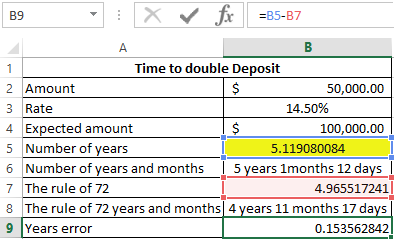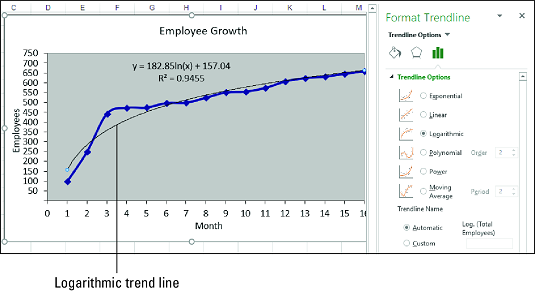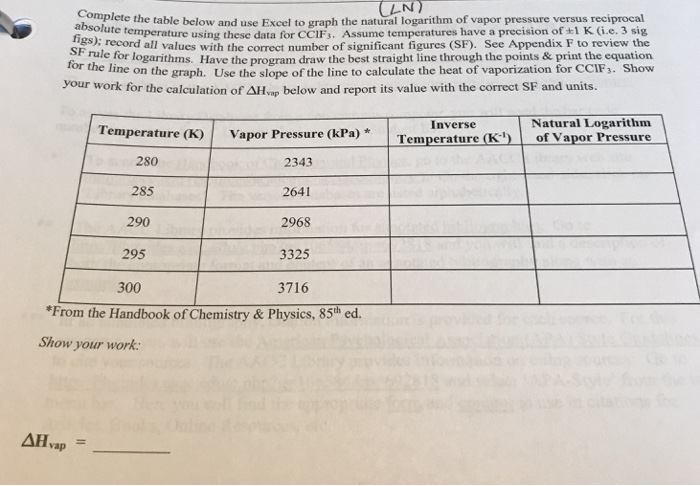
In this article, we will learn about how to use the LN function in Excel.
In this article, we will learn about how to use the LN function in Excel. In mathematics ln is an inverse of an exponential function. The logarithm to base e (value of e is approximately equals to 2.7128) is called the natural logarithm. This Tutorial demonstrates how to use the Excel LOG Function in Excel to calculate the logarithm of a number to a specified base. LOG Function Overview. The LOG Function Calculates the logarithm of a number to a specified base. To use the LOG Excel Worksheet Function, select a cell and type: (Notice how the formula inputs appear).
In mathematics ln is an inverse of an exponential function. The logarithm to base e (value of e is approximately equals to 2.7128) is called the natural logarithm.
ex= y
x = loge(y)
The LN function returns the log of a value at base e. For example log(e) at base e returns 1.
Syntax:
Note: it works the same as LOG function where base is fixed to constant 'e'.
- Subscribe Now:More:the inverse log function in Excel i.
- Excel LN is used to calculate the natural logarithm of a number. What is the Natural Logarithm Function? The natural logarithm of a number is its logarithm to the base of the mathematical constant e, where e is an irrational and transcendental number approximately equal to 2.59.
Let's understand this function using it an example.
Here we have numbers in Column A. we need to find the LN of these numbers.
These numbers are generated using EXP functions as we can't get the constant value of 'e' in Excel.
Use the formula
Here LN returns the Logarithmic value in A2 at base 'e'.
e1= 2.7128.
1 = loge(e)
The above stated equation stats that LN(e) = 1


Now we will apply the formula to other cells to get the LN of all numbers.
As you can see LN function returns the logarithmic of the numbers at base e.
Hope you understood how to use LN function and referring cell in Excel. Explore more articles on Excel mathematical function function here. Please feel free to state your query or feedback for the above article.
Related Article:
Popular Articles:
Sometimes the subtle nuances of Excel functions can get a little tricky. I ran across one of those situations just the other day when I was working on a project that involved logarithms in VBA.
To find the logarithm of a number in Excel, you use the LOG function, whose syntax looks like this:
[Note: Want to learn even more about advanced Excel techniques? Watch my free training just for engineers. In the three-part video series I'll show you how to easily solve engineering challenges in Excel. Click here to get started.]
LOG(number,[base])
Where: Apache friends website.
- number is the number for which you want to return the logarithm, and
- base is the base of the logarithm. By default, this value is 10, unless you choose to specify it.
So if you want to calculate the following:
Acronis true image 2021 build 30480 bootable iso. You would enter it into Excel like this:
=LOG(3,10)

or
=LOG(3)

In this article, we will learn about how to use the LN function in Excel.
In this article, we will learn about how to use the LN function in Excel. In mathematics ln is an inverse of an exponential function. The logarithm to base e (value of e is approximately equals to 2.7128) is called the natural logarithm. This Tutorial demonstrates how to use the Excel LOG Function in Excel to calculate the logarithm of a number to a specified base. LOG Function Overview. The LOG Function Calculates the logarithm of a number to a specified base. To use the LOG Excel Worksheet Function, select a cell and type: (Notice how the formula inputs appear).
In mathematics ln is an inverse of an exponential function. The logarithm to base e (value of e is approximately equals to 2.7128) is called the natural logarithm.
ex= y
x = loge(y)
The LN function returns the log of a value at base e. For example log(e) at base e returns 1.
Syntax:
Note: it works the same as LOG function where base is fixed to constant 'e'.
- Subscribe Now:More:the inverse log function in Excel i.
- Excel LN is used to calculate the natural logarithm of a number. What is the Natural Logarithm Function? The natural logarithm of a number is its logarithm to the base of the mathematical constant e, where e is an irrational and transcendental number approximately equal to 2.59.
Let's understand this function using it an example.
Here we have numbers in Column A. we need to find the LN of these numbers.
These numbers are generated using EXP functions as we can't get the constant value of 'e' in Excel.
Use the formula
Here LN returns the Logarithmic value in A2 at base 'e'.
e1= 2.7128.
1 = loge(e)
The above stated equation stats that LN(e) = 1
Now we will apply the formula to other cells to get the LN of all numbers.
As you can see LN function returns the logarithmic of the numbers at base e.
Hope you understood how to use LN function and referring cell in Excel. Explore more articles on Excel mathematical function function here. Please feel free to state your query or feedback for the above article.
Related Article:
Popular Articles:
Sometimes the subtle nuances of Excel functions can get a little tricky. I ran across one of those situations just the other day when I was working on a project that involved logarithms in VBA.
To find the logarithm of a number in Excel, you use the LOG function, whose syntax looks like this:
[Note: Want to learn even more about advanced Excel techniques? Watch my free training just for engineers. In the three-part video series I'll show you how to easily solve engineering challenges in Excel. Click here to get started.]
LOG(number,[base])
Where: Apache friends website.
- number is the number for which you want to return the logarithm, and
- base is the base of the logarithm. By default, this value is 10, unless you choose to specify it.
So if you want to calculate the following:
Acronis true image 2021 build 30480 bootable iso. You would enter it into Excel like this:
=LOG(3,10)
or
=LOG(3)
And Excel would return a value of 0.477.
But, let's try using the Log function in a User Defined VBA Function. Just for demonstration I'll create a simple function called MyLog with a single input.
[Note: Want to learn even more about advanced Excel techniques? Watch my free training just for engineers. In the three-part video series I'll show you how to easily solve engineering challenges in Excel. Click here to get started.]
And trying it out in the worksheet…
…gives us this result:
Natural Log In Excel Vba
Although it appears that I used the same function, the result is definitely not the same. But why?
Well, it turns out that the 'Log' function in VBA returns the natural logarithm of a number, rather than a common logarithm. In an Excel worksheet, the function to return a natural logarithm is LN(number).
Natural Log
Although it's a little messier, we can at least still reference the LOG worksheet function in a VBA subroutine or user defined function by preceding the Log function with Application.WorksheetFunction. This will cause the VBA code to reference the Application object's built-in worksheet functions, of which LOG is one.
And now, of course, the User Defined Function returns the correct result: Zkillboard eve online.
Honestly, this is something in Excel that disappoints me. We can work around it by using Application.WorksheetFunction, but the problem is that using LOG as a function in VBA DOES return a result, although its incorrect. It's the kind of error that could easily go unnoticed. Of course, this is why it's always important to try to cross-check your results with another data point or reference. And always ask, 'Does this make sense?', regardless of the software package you are using.
How To Take Natural Log In Excel
[Note: Want to learn even more about advanced Excel techniques? Watch my free training just for engineers. In the three-part video series I'll show you how to easily solve engineering challenges in Excel. Click here to get started.]

